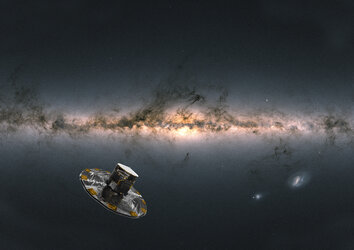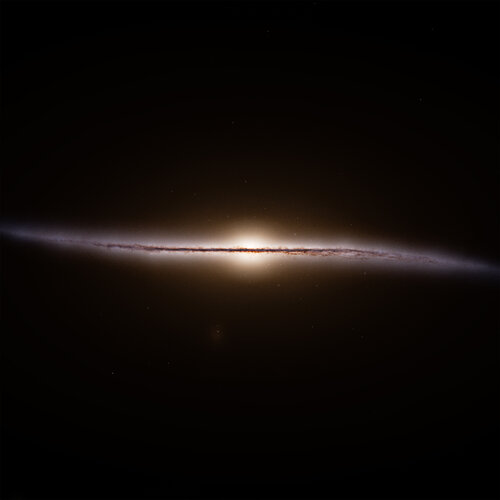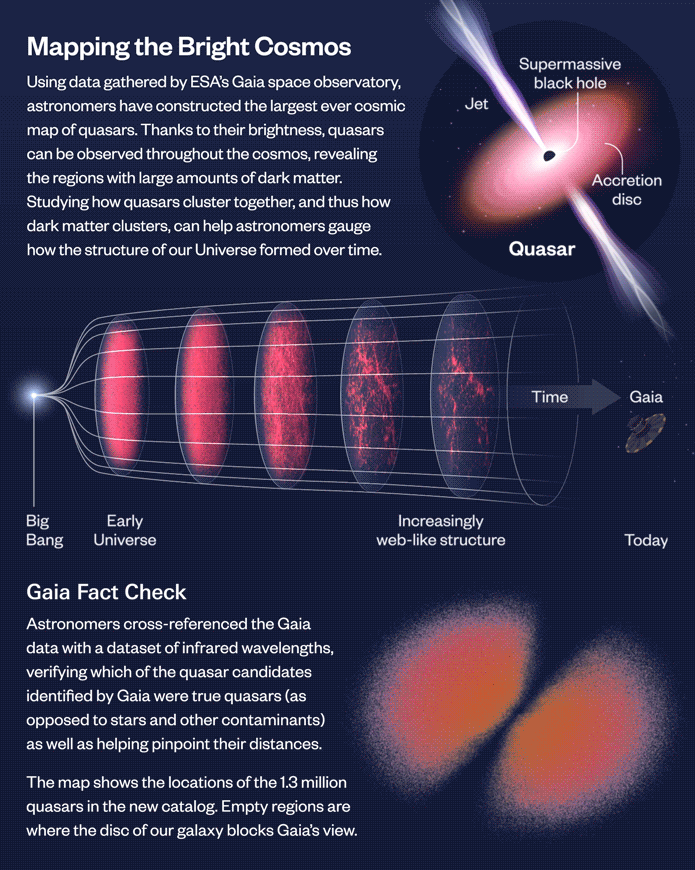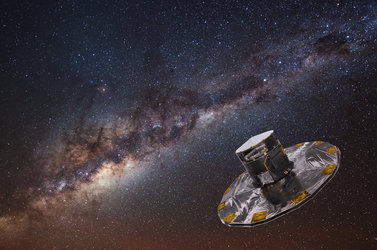
Gaia
ESA's billion star surveyor
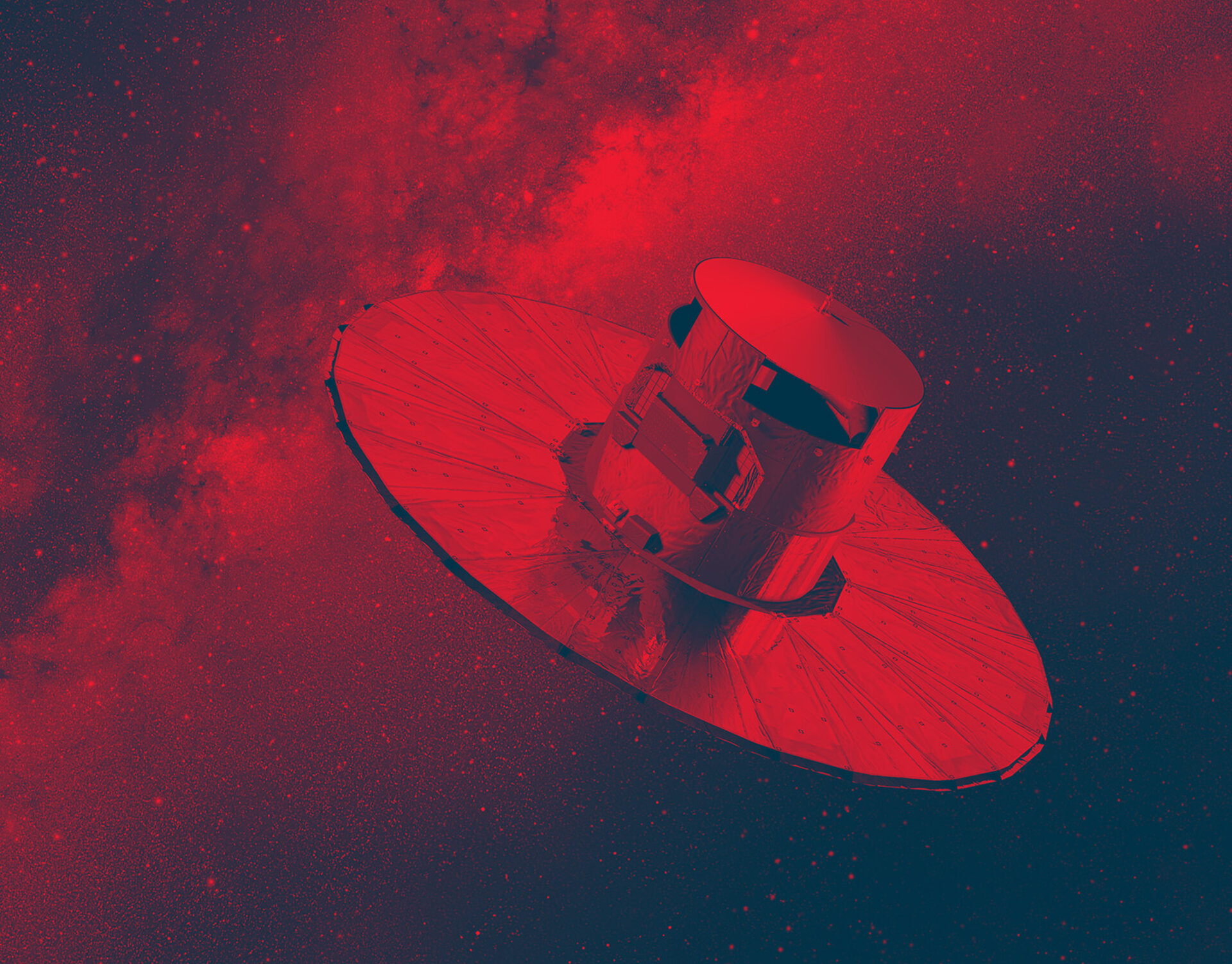
The mission
From 27 July 2014 to 15 January 2025, Gaia has made more than three trillion observations of two billion stars and other objects throughout our Milky Way galaxy and beyond, mapping their motions, luminosity, temperature and composition. Gaia's extraordinarily precise three-dimensional map will provide the data needed to tackle an enormous range of important questions related to the origin, structure and evolutionary history of our galaxy.
- Launch: 19 December 2013
- Orbit: L2 Lagrange point
- End of science observations: 15 January 2025
-
Upcoming data releases:
Data Release 4 (based on 66 months of data): not before mid 2026
Data Release 5 (based on all mission data) not before the end of 2030 -
Previous data release milestones:
Data Release 1: 14 September 2016
Data Release 2: 25 April 2018
Early Data Release 3: 3 December 2020
Data Release 3: 13 June 2022
Focused Product Release: 10 October 2023
- 1 billion pixel camera
- 10 m sunshield
- 1800 million objects
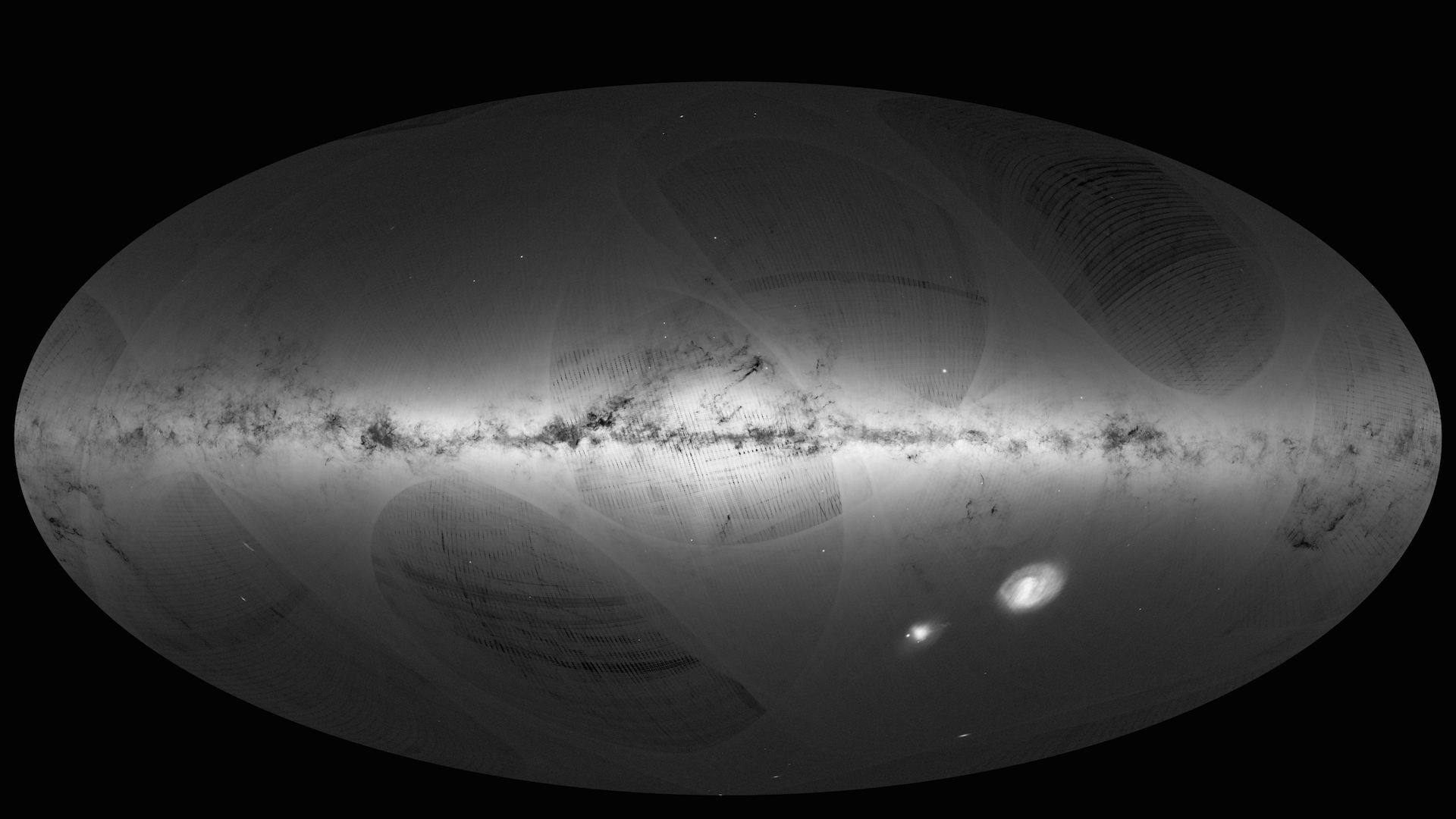














 Germany
Germany
 Austria
Austria
 Belgium
Belgium
 Denmark
Denmark
 Spain
Spain
 Estonia
Estonia
 Finland
Finland
 France
France
 Greece
Greece
 Hungary
Hungary
 Ireland
Ireland
 Italy
Italy
 Luxembourg
Luxembourg
 Norway
Norway
 The Netherlands
The Netherlands
 Poland
Poland
 Portugal
Portugal
 Czechia
Czechia
 Romania
Romania
 United Kingdom
United Kingdom
 Slovenia
Slovenia
 Sweden
Sweden
 Switzerland
Switzerland




























